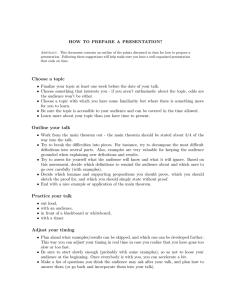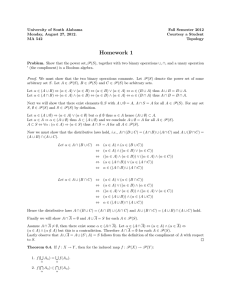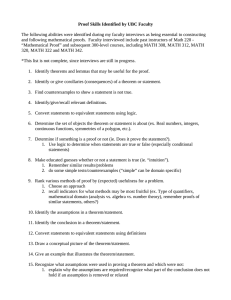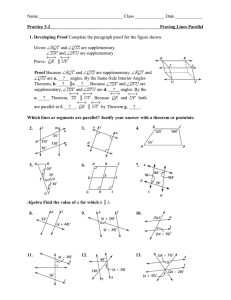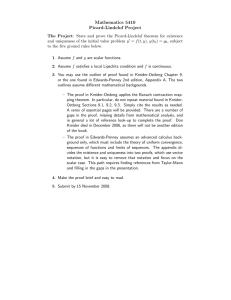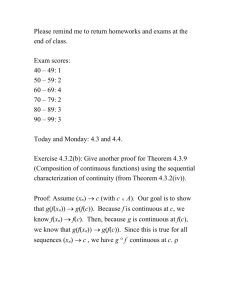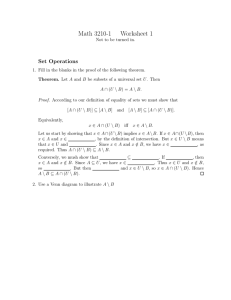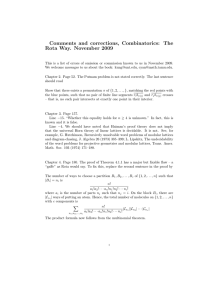Day 23 CS 254, Spring 2013 A. For any natural number k, let
advertisement
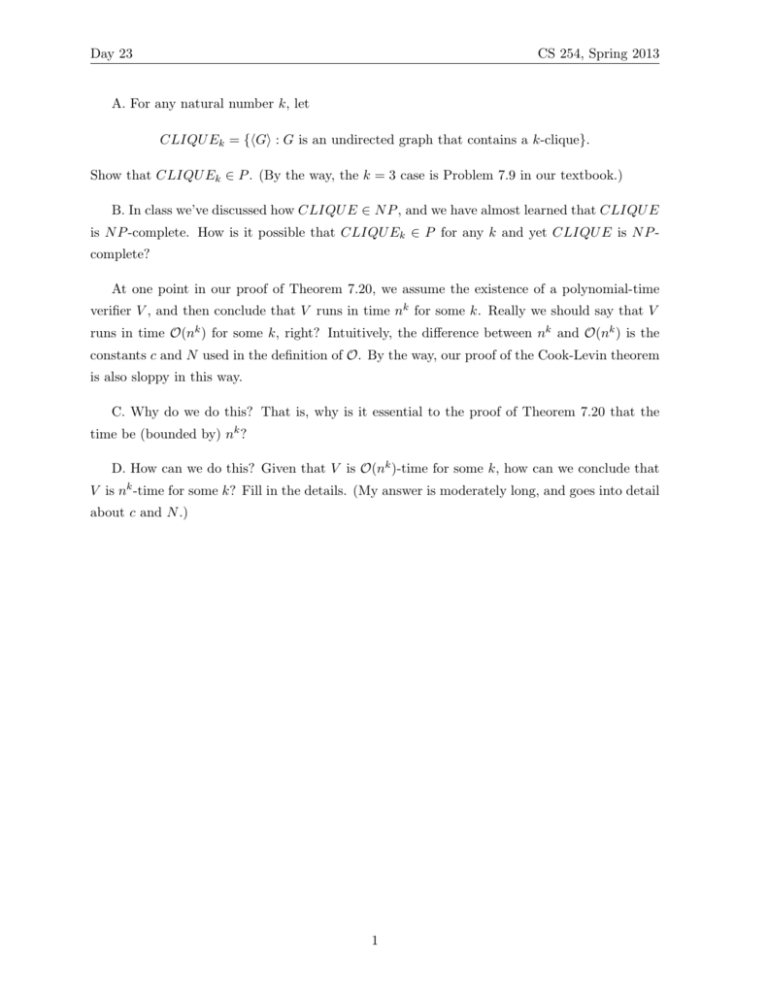
Day 23
CS 254, Spring 2013
A. For any natural number k, let
CLIQU Ek = {hGi : G is an undirected graph that contains a k-clique}.
Show that CLIQU Ek ∈ P . (By the way, the k = 3 case is Problem 7.9 in our textbook.)
B. In class we’ve discussed how CLIQU E ∈ N P , and we have almost learned that CLIQU E
is N P -complete. How is it possible that CLIQU Ek ∈ P for any k and yet CLIQU E is N P complete?
At one point in our proof of Theorem 7.20, we assume the existence of a polynomial-time
verifier V , and then conclude that V runs in time nk for some k. Really we should say that V
runs in time O(nk ) for some k, right? Intuitively, the difference between nk and O(nk ) is the
constants c and N used in the definition of O. By the way, our proof of the Cook-Levin theorem
is also sloppy in this way.
C. Why do we do this? That is, why is it essential to the proof of Theorem 7.20 that the
time be (bounded by) nk ?
D. How can we do this? Given that V is O(nk )-time for some k, how can we conclude that
V is nk -time for some k? Fill in the details. (My answer is moderately long, and goes into detail
about c and N .)
1



